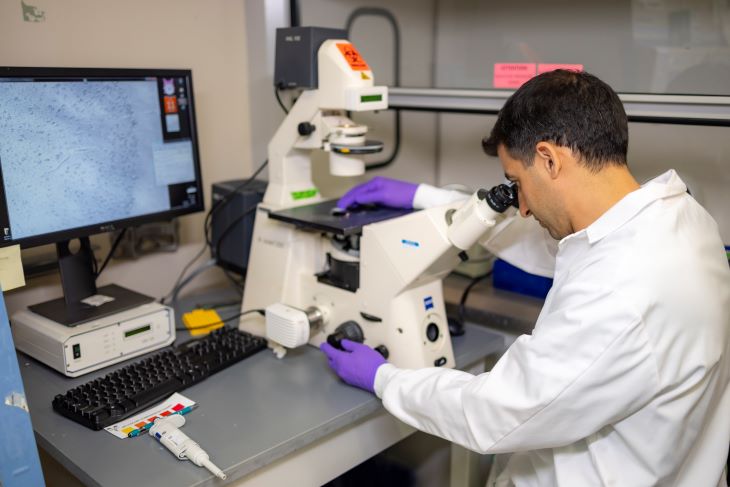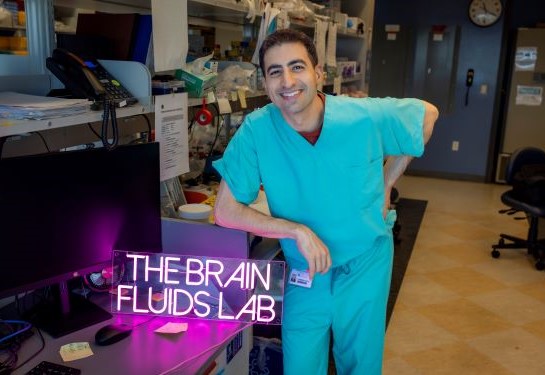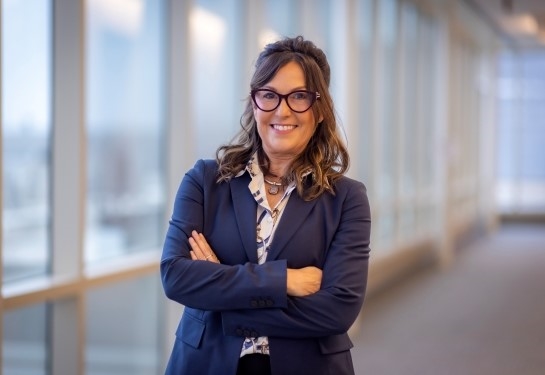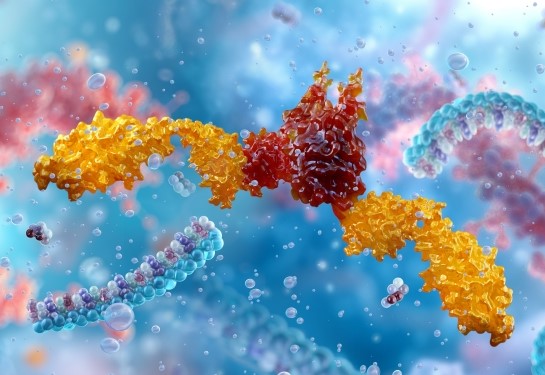UC Davis pediatric neurosurgeon receives national award for hydrocephalus research
The Hartwell Foundation Award will fund the development of a gene therapy to treat blood and fluid buildup in newborns’ brains
Hydrocephalus is a potentially fatal condition caused by the buildup of fluid in the brain. It results in abnormal brain pressure and injury to brain tissues. This condition is relatively common in premature babies and occurs in 1 in 1,000 live births.
Even with the best treatment options, the condition can lead to lifelong mental, cognitive and physical challenges and substantial costs.
UC Davis pediatric neurosurgeon Cameron Sadegh is working to change this outcome. He is developing a gene therapy that might improve quality of life for babies with hydrocephalus and other brain fluid disorders.
Sadegh is an assistant professor and physician-scientist in the Department of Neurological Surgery. His lab is at the Institute for Pediatric Regenerative Medicine in Shriners Children’s- North California.
Sadegh was recently selected to receive a 2024 Hartwell Individual Biomedical Research Award from The Hartwell Foundation. This award funds early-stage, innovative biomedical research that benefits children in the United States.
About hydrocephalus
Sadegh’s research will focus on hydrocephalus in premature babies. This condition is caused by a stroke within the deep brain structures. This causes bleeding in the brain.
To treat this condition, physicians need to decide whether to remove the blood clot or drain the fluid around it. While operating on these tiny brains carries high risks, leaving the blood clot to disintegrate may lead to toxic levels of minerals found in blood cells.
“The brains of extremely premature babies are at greatest risk of developing brain injuries due to blood clots. The breakdown of these clots results in brain fluid buildup and brain damage,” Sadegh explained.
Current therapies for hydrocephalus
Current hydrocephalus treatments aim to release the fluid buildup in the brain. They include surgeries to place a draining device in the brain to re-route the fluid. Surgeons are making an educated guess on the timing and selection of these treatment options.
“Premature babies need lifelong care to make sure the brain’s plumbing is working well. They often need many brain scans and surgeries, as there is always a risk of a device malfunction. The current treatments are far from ideal. We need new and lasting treatments for this life-altering condition.”
Developing the right permanent treatment
It is still a mystery how the brain maintains the right amount of fluid. The main structure that regulates brain fluid is the choroid plexus. This tissue in the middle of the brain represents a promising target for the new potential treatment.
Sadegh’s research will look at the NKCC1 gene, which expresses a key protein in the choroid plexus membrane. This protein facilitates the uptake of sodium, potassium and chloride ions into the cells. Its role is critical to the secretion and absorption of cerebrospinal fluid in the brain.
“When the blood clot disintegrates, the red blood cells pop, releasing extra potassium into the brain fluid. Too much potassium is extremely toxic to neurons,” Sadegh explained.
The gene therapy he is developing introduces potassium channels in the choroid plexus to help shuttle potassium out of the brain fluid. Water flows out with the potassium and thus leaves the brain.

Developing and testing the gene therapy
Sadegh has led the development of the first known gene therapy for treating hydrocephalus in a pediatric mouse model. The new award will help Sadegh test and optimize this therapy in a large animal model of hydrocephalus. He will also use donated human tissue to test if this approach works well in humans.
The objective is to replace the need to implant devices in the brain and help reduce brain injuries linked to high brain pressure.
“I hope to one day lead this gene therapy approach to a clinical trial in children. If successful, we could have a non-surgical cure for the most common type of hydrocephalus in America. It is an approach that might also be replicated to treat other neurologic conditions,” Sadegh said.
The Hartwell Foundation awards
Sadegh joins the ranks of UC Davis Health researchers Geoanna M. Bautista, Roy Ben-Shalom and Erin Brown who were previously selected for the Individual Biomedical Research Award. He is one of only ten scientists nationwide to receive this prestigious award this year. With this award, Sadegh will get $100,000 per year for three years.
“We are extremely proud of Dr. Sadegh’s selection for this Hartwell Foundation award,” said Kim E. Barrett, vice dean for research and distinguished professor of physiology and membrane biology. "He is an outstanding pediatric neurosurgeon, saving the lives of our tiniest and most vulnerable patients. His research is advancing knowledge of hydrocephalus and other disorders that involve bleeding in the brain, which should significantly reduce associated long term disabilities.”
The foundation will also fund a UC Davis postdoctoral researcher at $50,000 per year over two years. The researcher will pursue specialized training in biomedical research.
The Hartwell Foundation also selected UC Davis as one of the 2025 Top Ten Centers of Biomedical Research. This selection considers the presence of a medical school and biomedical engineering program, as well as the quality and scope of ongoing biomedical research.
Related Stories:




